Errors of the German shipbuilding. The armored cruiser "Blucher". H.3
Let's start with the Baltic, or rather, with the unsuccessful attempt by Blucher to intercept two Russian armored cruisers, held on 24 in August, 1914 of Bayan and Pallas were on watch at Dagerort, finding there the German light cruiser Augsburg, which traditionally tried to carry on for a Russian ships in the trap. However, the Bayan and Pallas did not accept such a kind "invitation", and, as it soon turned out, they did quite right, because at 16.30 Kabeltov the German detachment, led by the Blucher cruiser, was revealed at a distance of 220 cables. I must say that the Russian signalmen took him for Molka, which is not surprising due to the well-known similarity of their silhouettes, but there was no difference for Bayan and Pallas.
With eight 210-mm guns in the side salvo, the Blucher at a great distance twice exceeded both Russian cruisers together (four 203-mm guns), especially since it is easier to control the fire of one ship than by a combination of two ships. Of course, having a very solid booking, “Pallas” and “Bayan” could hold on to the “Blucher” for some time, but could not win it, and there was no point in getting involved with him in a fight for Russian cruisers.
Therefore, "Bayan" and "Pallas" turned to the throat of the Gulf of Finland, and "Blucher" rushed in pursuit. All sources noted the high speed of "Blucher", which he demonstrated not only on the measured mile, but also in everyday use, and this Baltic episode is a good confirmation of this. Judging by the descriptions, it was like this - In 16.30, the Russians, following the speed of 15 nodes, saw the Germans. For some time, the ships continued to converge, and then, when they identified the enemy in Pallas and Bayan, the Russian detachment turned around for retreat. At the same time, “Blucher” developed a full swing (it is indicated that this happened to 16.45) and turned it over to the Russians. The distance between the opponents was quickly reduced, and after 15 minutes (to 17.00) the distance between the ships was 115 cable. Understanding the danger of further rapprochement, the Russian cruisers increased the speed to the 19 catch, but in the 17.22 the Blucher nevertheless became close to them on the 95 kb and opened fire.
Blucher acted very close to the Russian bases fleet, which could well go to sea, and his commander, in any case, expected to meet Russian sentinel cruisers. This suggests that the "Blucher" followed in full readiness to give full speed, which, however, on a steam ship still takes some time. Therefore, it is not surprising that the Blucher, according to Russian observers, went full speed 15 minutes after visual contact, although it cannot be ruled out that it took him a little longer. But in any case, in 22 minutes (from 17.00 p.m. to 17.22 p.m.) he got closer to the Russian cruisers traveling at 19 knots for about 2 miles, which required the Blucher speed of 24 or even more knots (in order to accurately calculate the speed of the Blucher ", Required laying of ship courses during this episode).
However, the high speed of the "Blucher" did not help - the Russian cruisers managed to retreat.
The raids on Yarmouth and Hartlepool are of little interest for the simple reason that some serious clashes did not occur during these operations. The exception is the episode of the coastal battery Hartlepool, which was armed with as many as three 152-mm guns. When fighting with Moltke, Seidlitz, and Blucher, the battery used up the 123 projectile, achieving 8 hits, which was 6,5% of the total amount of projectiles consumed! Of course, this brilliant result had no practical significance, since the six-inch ones could have been scratched by the German cruisers, but still they did. Six of the eight hits fell on the Blucher, killing nine people and wounding three.
And then the battle took place at Dogger Bank.
In principle, if we briefly summarize the bulk of domestic publications, this collision of battle cruisers in Germany and England is as follows. The Germans after Yarmouth and Hartlepool were planning a raid on the Feard of Fort (Scotland), but canceled it due to bad weather. Because of this, the German fleet on the North Sea was greatly weakened, because “Von der Tann”, taking this opportunity, put it in the dock for repairs, which it needed, and the main power of Hohzeeflotte was the 3-th linear squadron, consisting of the newest The dreadnoughts of the "Koenig" and "Kaiser" types were sent to undergo a combat training course in the Baltic.
But it unexpectedly cleared up, and the command of Hohzeeflotte nevertheless ventured to make a raid on Dogger Bank. It was dangerous, because against the five battlecruisers of the British, the presence of which the Germans knew, Rear Admiral Hipper's 1 reconnaissance group had only three, and also Blücher, who was completely unsuitable for battle with the battlecruisers of the British. Nevertheless, the commander of the German open-sea fleet, Rear Admiral Ingenol, considered the attack possible because he knew that the British fleet was on the eve of the German raid and was now in need of bunkering, i.e. replenishment of fuel. Ingenol did not consider it necessary to withdraw the main forces of the fleet for the implementation of long-range cover of his battlecruisers, since he believed that the large-scale exit of the fleet would not go unnoticed and would alert the British.
The German plan became known in England through the work of the 40 room, which was a British radio intelligence service. It was so simple that the British, at the beginning of the war, received from the Russian copies of the cipher tables, codes and signal books from the cruiser Magdeburg, which had crashed on the rocks near the island of Odenholm. But in any case, the British knew about the German intentions and prepared a trap - at Dogger Banks, the squadron of Rear Admiral Hipper was waited by those five battlecruisers, whom he feared to meet, but so far successfully avoided.
Hipper did not accept the battle - having found the enemy, he began to retreat, recklessly putting the most weakly protected "Blucher" to close the column of German battle cruisers. Here, as a rule, the Japanese are remembered, who knew that in battle both the head and end battleships or cruisers of the column always have good chances to get under strong enemy fire, and therefore in the battles of the Russian-Japanese war they tried to put quite powerful and good protected ships. Rear Admiral Hipper did not do this, and therefore made a big and difficult to explain error.
As a result, the fire of British ships focused on the "Blucher", he received a fatal hit, fell behind and was doomed to death. However, Beatty’s flagship, battle cruiser Lion received damage and left the battlefield. Because of the misunderstood signal of the flagship, the British battlecruisers, instead of pursuing the retreating Derflinger, Seidlits and Moltke, hit the outdated Blucher with all their might, and received 70-100 projectile hits and 7 torpedoes, went to the bottom without lowering the flag. As a result, the last battle of “Blucher” became evidence not only of the heroism of the German sailors, which is completely undeniable, because the cruiser, left alone, fought to the last opportunity and died without lowering the flag in front of the enemy, but also of the highest professionalism of the German shipbuilders who designed and built so tenacious ship.
It seems that everything is simple and logical, but in fact the Dogger-banks battle is replete with many questions that can hardly be expected to be answered, including in this article. To begin with, we will consider the decision of Rear Admiral Hipper to put the "Blucher" as the closing one, i.e. at the end of the system. On the one hand, it seems to be nonsense, but on the other ...
The fact is that "Blucher", wherever you put it, but it didn’t work out well from the word "absolutely." In a naval battle, both the British and the Germans did not seek to focus the fire of all ships on one goal, but preferred to fight "one on one", i.e. their head ship fought the enemy head, the next one was to fight the second ship in enemy order, etc. The concentration of the fire of two or more ships was usually carried out when the enemy was inferior in number or in case of poor visibility. The British had four battlecruisers with 343-mm artillery, and in the case of the “correct” battle, “Blucher” was to fight against one of the “Layons”, which was to end for him in the most pitiable manner.
In other words, the only role that “Blucher” could play in the lineup of the battlecruisers was to delay the fire of one of them for a while, thus facilitating the battle for the rest of the German ships. On the other hand, ships sometimes need to be repaired, the author of this article does not know if the Germans knew that Queen Mary could not participate in the battle, but if suddenly there were not four but only three British 343-mm against the Hipper squad ”Linear cruisers, the“ Blucher ”will have to“ duel ”with a ship with 305-mm artillery, which may allow him to live a little longer. But the most important thing is that it’s important not a place in the ranks, but a position regarding the enemy, and in this respect Rear-Admiral Hipper’s actions are very interesting.
To conduct a decisive battle with three battlecruisers against five commanders of the 1 th reconnaissance group was completely out of hand. This is all the more true because Hipper could not know who was going behind the Beatty ships, while he knew for sure that Ingenol’s battleships didn’t cover him. On the other hand, it made sense to retreat precisely in the direction from which the alarm dreadnoughts of the open sea could come, which, in general, predetermined Hipper’s tactics. Finding the enemy, he turned away, seemingly putting the "Blucher" under fire by the British cruisers, but ... without going into details of the maneuvering, let us pay attention to what configuration the teams of Beatty and Hipper entered the battle.
Well, yes, Hipper turned home, but, having done that, he turned around bearing system. As a result of this, indeed, in the outset of the battle, the fire of the leading British ships was to concentrate on the “Blucher”. However, the fact is that with the reduction of the distance (and the fact that British cruisers are faster, Hipper hardly doubted), the most dangerous “343-mm” cruisers Beatty would carry the fire to Derflinger, Moltke and Seidlitz. In other words, Hipper did put the "Blucher" under the focus of enemy fire, but not for long and from extreme distances, then the fire of the most terrible British "Lion", "Tiger" and "Princess Royal" should have focused on its battlecruisers. In addition, there was some hope that the smoke of the leading ships of Hipper, as the 1 th battleship of the battle cruisers Beatty approached, would cover Blyukher from the annoying attention of the British gunners a little.
And now let's remember the actions of the British in that battle. In 07.30, the Beatty battlecruisers discovered the main forces of Hipper, while they were on the port side of the British. Theoretically, nothing prevented the British admiral "cut the afterburner" and get close to the German end "Blucher", after which the latter would not save any build of the ledge, performed by Hipper. But the British did not. Instead, they, in fact, laid down a course parallel to the Germans and added speed, as if accepting the rules of the game proposed by the German Rear Admiral. Why is that? Did the English commander, Rear Admiral David Beatty, be struck by a sudden clouding of reason?
Not at all, Beatty did everything perfectly right. Following the parallel course of the German detachment and realizing his superiority in speed, Beatty had hope to cut off Hipper from his base, and in addition, the direction of the wind with such a maneuver would provide the best firing conditions for the battlecruisers of the British - all these considerations were much more weighty than the possibility "Roll out" the German terminal. Therefore, having approached the German detachment on the 100 cable, in 08.52, Beatty also rebuilt his cruisers with an escarpment - thus the smoke of his ships was carried to a place where he could not interfere with the next British ship.
And the result - in 09.05, the British flagship Lion began firing at Blucher, but after a quarter of an hour (at 09.20), when the distance was reduced to 90 cables, he moved the fire to the next Derflinger. According to the "Blucher", the next-ranked second in the British formation, the Tiger, began shooting, and shortly afterwards the Princess Royal joined him. However, after only a few minutes (the exact time is unknown to the author, but the distance was reduced to 87 cab, which probably corresponds to 5-7, but no more than 10 minutes), Beatty gave the order to “take fire on the corresponding ships of the enemy column” that is, now Lyon was shooting at the flagship of Rear Admiral Hipper Zeidlits, Tiger was supposed to shoot at Moltke, and Princess Royal focused on Derflinger. According to Blucher, New Zealand was supposed to shoot, but he and Indomiteble lagged behind the more high-speed Admiral Fisher cats, and besides, their guns and rangefinders did not allow them to fight effectively over long distances. As a result, the Germans' end ship was in the best position of all four of the “big cruisers” of Rear Admiral Hipper.
The fact is that under the intense fire of the British "Blucher" was only a short period of time, from 09.05 and up to about 09.25-09.27, after which the "343-mm" Beatty cruisers transferred the fire to other German ships, and lagging behind "Indomitebl "And" New Zealand "to" Blucher "did not reach. Thus, in the course of the battle, “Blucher”, despite the fact that he had closed the line, remained perhaps the most unfired German ship — he was “paid attention” only if some German battleship was hiding in the smoke that it was impossible to direct on him. And, of course, as soon as the opportunity arose, the fire was again transferred to Derflinger or Seidlitz. The only ship that was even more advantageous was the Moltke, but this was not Hipper’s merit, but a consequence of the English mistake — when Beatty ordered to “take the appropriate ships under fire”, he meant that the bill came from the lead ship: “ Lion should shoot at Seidlits, Tiger - at Moltke, etc., but Tiger decided that the score came from the end of the column, i.e. the closing Indomiteble should focus on Blucher, New Zealand on Dreflinger, and so on, and Tiger and Lyon concentrate fire on Zeidlitsa. But the "Seidlits" from the "Tiger" was poorly visible, so the newest English battleship did not fire at him for long, transferring fire to either the "Derflinger" or the "Blucher".
Judging by the descriptions of the battle, until the three “343-mm” battlecruisers of the British concentrated their fire on the Derflinger and Seidlitz, the Blucher received only one hit - in the stern, probably from the Lion. Some sources indicate that this hit did not cause significant damage, but others (such as von Haase) write that “Blucher” then sank noticeably - apparently the rupture of an 343-mm projectile caused flooding. But in any case, the ship kept the course and combat capability, so that the hit did not solve anything.
It is absolutely impossible to say whether the German commander was guided by the above considerations, or whether this happened by itself, but as a result of his chosen tactics, starting around 09.27 and up to 10.48, i.e. For nearly an hour and a half, the Blucher was not in the focus of British fire. As you can see, Tiger and Princess Royal were periodically shot at him, while the Princess probably made one hit. Accordingly, there is no reason to believe that Hipper’s decision to put the “Blucher” at the tail of the column was wrong.
However, the battle is a battle, and sometimes in the "Blucher" still came under fire. As a result, in the 10.48 ship the third hit, which became fatal for him. A heavy 343-mm projectile pierced the armored deck in the center of the ship, and perhaps (very much like this) exploded at the moment of armor passage. And here is the result - as a result of one single hit in the “miracle of German technology” on the “Blucher”:
1) There was a strong fire, the personnel of the two front side towers died (similar to the damage of the “Seidlitz” stern towers in the same battle;
2) Steering, engine telegraph, fire control system disabled;
3) The main steam pipe of the boiler room No. 3 was damaged, causing the cruiser speed to drop to 17 nodes.
Why did this happen? In order for the cruiser to develop 25 units, it was necessary to install a super-powerful steam engine on it, but it took up a large amount, leaving too little space for other spaceships. As a result, "Blucher" received a highly original placement of the cellars of the towers of the main caliber, located along the sides.
Usually, the ammunition cellars are located directly at the supply pipes (barbets) of the tower, deep inside the ship's hull and below the waterline. However, such an arrangement on the “Blucher” could not be realized; as a result, of the four towers placed in the middle of the hull, two nasal towers did not have artillery cellars, and the shells and charges to them were fed from the cellars of the stern towers through a special corridor located directly below the armor deck. According to sources, at the time the English projectile hit the corridor, there was a fire from 35 to 40 charges, which caused a severe fire spreading into the nose towers and destroying their personnel.
And why did the machine telegraph, steering and SLA fail? Yes, for the simple reason that they were all laid along the same corridor along which the delivery of ammunition to the two "side-nose" towers was organized. In other words, the designers of “Blucher” managed to create an extremely vulnerable spot, hit which led to the immediate failure of the main systems of the ship and the Germans paid for it in the Battle of Dogger Bank. A single British projectile lowered the combat capability of the Blucher 70 percent, if not more, and in fact doomed him to death, because with the loss of speed the ship was doomed. He fell out of order and went north - the lack of travel and the broken steering interfered with the return to the ship.
So, in the 10.48, the British knocked out of the German line "Blucher", but after some four minutes another hit in the flagship "Lion" brought it down - its speed dropped to the 15 nodes. And here a number of events occurred that are important for understanding what happened to Blucher afterwards.
Two minutes after hitting the Lion, which was out of order, Rear Admiral Beatty personally “saw” the submarine's periscope to the right of the flagship, although, of course, there was no submarine. But, in order to avoid her torpedoes, Beatty ordered to raise the signal "turning 8 points (90 degrees - approx. auth.) to the left. Following the new course, the Beatty ships would pass under the stern of the Hipper column, while the German battleships would be removed from the British. However, on the "Tiger" and other British ships, this signal was not seen, and they continued to move forward, catching up with Hipper's battle cruisers.
At this point, the German rear admiral made an attempt to save the "Blucher", and perhaps, noticing damage to the leading British ship, found this moment suitable for a torpedo attack. He turns a few points to the side of the British battle cruisers who are catching up with him, and gives the appropriate order to his destroyers.
The British admiral is completely satisfied with this behavior of the Germans. By 11.03, Beatty already knows that the damage to his flagship cannot be repaired quickly, and he should transfer to another ship. Therefore, he manages to raise the flag signals (the radio had already failed): “attacking the enemy’s tail” and “getting close to the enemy”, and then, in order to avoid misunderstanding, a third signal specifying the course of the British battle cruisers East). Thus, Beatty orders his squadron to go straight to the Hipper battleships that cruise through its course.
Well, then begins an oxymoron. Before picking up new signals, Beatty’s flagship signalman had to pull the previous one out (“turn on 8 points to the left”), but he forgot to do so. As a result, on the "Tiger" and other battlecruisers, the British saw the signals: "Turn left 8 points", "Attack the enemy's tail" and "Approach the enemy", but the order for a new course to the northeast (towards Hipper) have seen. The first order separates the British ships from the Hipper battleships, but brings them closer to the Blucher, who by this time could somehow cope with steering problems and tried to follow the rest of the German ships. How else could the battlecruisers and Admiral Moore interpret the Beat’s order? Probably nothing. Although ... there are still nuances, but it makes sense to sort them out in a separate series of articles devoted to the Battle of Dogger-banks, and here we still consider the combat stability of "Blucher".
And so, misinterpreting the intentions of their flagship, the four English battlecruisers go to finish off the Blucher - this happens already at the beginning of the twelfth hour. The new British course removes them from the main forces of Hipper and makes a senseless attempt at a torpedo attack, so Hipper, seeing that he can no longer help Blucher, falls back and goes out of battle.
The fire of the British ships concentrates on the "Blucher" with some 11.10, and in the 12.13 the "Blucher" goes to the bottom. In fact, it is doubtful that the British continued to fire at the already overturned ship, so we can say that the intense fire of British ships continued, probably from 11.10 to 12.05 or about an hour. At the same time, the British caught up with “Blucher” - in 11.10, the distance to it was 80 of cables, as it was before the death of “Blucher”, unfortunately, is unknown.
And here it turns out quite interesting. For more than an hour and a half, three British battlecruisers fired mostly at “Seidlits” and “Derflinger” and at the same time achieved three hits in each, besides “Princess Royal” hit the “Blücher” twice. And then, four British cruisers, shooting at the same target, for 55 minutes they get 67-97 hits ?!
In the battle of Dogger Bank, the two battlecruisers of the British armed with 305-mm guns practically did not participate, because they could not keep the speed available to the Lion, Tiger and Princess Royal, and fell behind. In essence, they entered the battle only when the Blucher had already received his fatal hit and fell behind, that is, shortly before all the British battlecruisers rushed to the Blucher. At the same time, “New Zealand” spent 147 305-mm shells, and “Indomiteble” - 134 projectile. How many spent between 11.10 and 12.05 "Princess Royal" and "Tiger" is not known for certain, but for the entire three-hour battle "Princess Royal" spent 271 projectile, and "Tiger" - 355 shells, but all, it turns out, 628 shells. Assuming that in the period from 11.10 to 12.05, i.e. for 55 minutes, they spent the maximum 40% of the total consumption of shells, we get about 125 shells for each ship.
Then it turns out that during the concentration of fire on the "Blucher" four British battlecruisers spent an 531 projectile. We are more or less reliably aware of the three hits at Blucher made before 11.10, given the real effectiveness of shooting British ships at Derflinger and Zeidlitz, this number looks realistic — the German battle cruisers got the same amount. It is possible, of course, that another two or three English projectiles fell into the "Blucher", but this is doubtful. Accordingly, in order to provide those same 70-100 hits, wandering from source to source, in the period from 11.10 to 12.05, it was necessary to get to Blucher at least 65-95 times. The percentage of hits in this case should have been completely unrealistic 12,24 - 17,89%! Need I remind you that the Royal Navy has never demonstrated similar results in combat?
In battle with the Scharnhorst and Gneisenau, the British battlecruisers spent 1 174 305-mm projectile and achieved, perhaps, 64-69 hits (yet to the cores of the German armored cruisers no one dived and did not recount them)) Even if we assume that all these hits were exactly 305-mm, and given that at the very beginning of the battle, the battlecruisers fired at Leipzig, the percentage of hits does not exceed 5,5-6%. But after all, there, in the end, the situation was the same as with the “Blucher” - the British shot the helpless Gneisenau from short distances. In the battle of Jutland, the best "team" result was demonstrated by the British 3-I squadron of battle cruisers - 4,56%. In the "individual standings", perhaps, the British battleship "Royal Oak" is leading with 7,89% hits, but here you need to understand that this result may be incorrect, because it is very difficult to guess from which battleship the heavy "gift" came It may be that some of the hits belong not to Royal Oak, but to other British battleships.
But in any case, no British battleship or cruiser in battle achieved a percentage of hits in 12-18%.
Now, remember that there is no consensus in foreign sources on this issue, and along with “70-100 hits + 7 torpedoes” there are much more weighted estimates - for example, Conway writes about 50 hits and two torpedoes. Let's check these figures using our method - if we assume that “Blyukher” before 11.10 received only 3 projectile, it turns out that in the next 55 minutes he received 47 hits, which is 8,85% of the 531 projectile we calculated. In other words, even this number sets an absolute record for the accuracy of the Royal Navy’s firing, despite the fact that it was Beatty's cruisers in all other cases (Jutland, shooting Dogger-banks at Derflinger and Zeidlitz) that showed many times worse results.
The personal opinion of the author of this article (which, naturally, he does not impose on anyone) - most likely, the British got into the “Blucher” three times before 11.10, and later, when the cruiser was finished, they achieved the accuracy of 5-6%, which also gives 27-32 hits, i.e. the total number of projectiles hit by Blucher does not exceed 30-35. He rolled over from the effects of flooding caused by the first 343-mm projectile that landed him in the stern (after which the ship sat down astern) and hit two torpedoes. But even if we take an intermediate assessment of 50 hits (Conway), the reconstruction of the last battle of Blucher still looks like this - in the first 20-25 minutes of the battle, he was fired at by all three 343-mm British cruisers, having achieved one hit, then for one and a half hours, the cruiser was not a priority target for the British, and only one shell hit it. By the way, it will be said, shortly before the decisive, third hit, from “Blucher” they reported on “Seydlitz” about the problems in the car. Is this a second hit result? In 10.48, “Blucher” strikes the shell with the “Princess Royal”, which disables everything that is possible (machine telegraph, FCM, steering wheels, two towers of the main caliber) and reduces its speed to 17 nodes. In 11.10, the attack on the "Blucher" of four English battlecruisers from a distance of approximately 80 cable runs, which lasts approximately 55 minutes, while not less than half of this time, while the distance has not decreased, the number of hits in "Blucher" is hardly amazing. But then the enemies still get closer and in the last 20-25 minutes of battle from short distances literally stuff the German cruiser with shells, as a result of which he dies.
And if the author is right in his assumptions, then we have to admit that the German “big” cruiser “Blucher” did not demonstrate any amazing “super-survivability” in his last battle - he fought and died as it should have been expected from a large armored cruiser in 15 000 t displacement. British cruisers certainly had enough of the smaller one, but they were let down by a British cord, prone to detonation if ignited, and besides, one should never forget that the Germans had excellent armor-piercing shells, but the British did not.
List of used literature
1. Vinogradov S. Fedechkin A. "The armored cruiser Bayan and its descendants"
2. Muzhenikov V.B. Armored cruisers "Scharnhorst", "Gneisenau" and "Blucher"
3. Muzhenikov V.B. The battlecruisers of England. Part of 1-2.
4. Parks O. The British Empire's Battleships Part of 5. At the turn of the century.
5. Pakhomov N.A. Armored cruisers Germany. Part of 1.
6. Fetter A.Yu. Linear cruisers such as "Invincible".
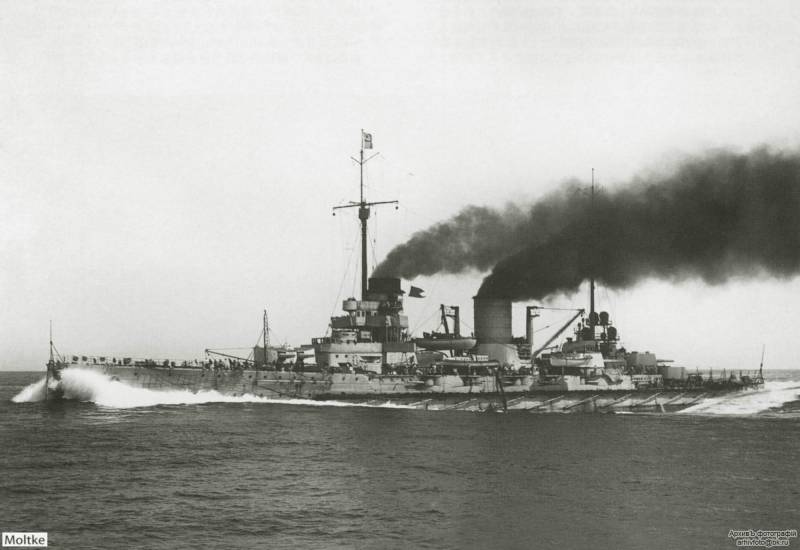
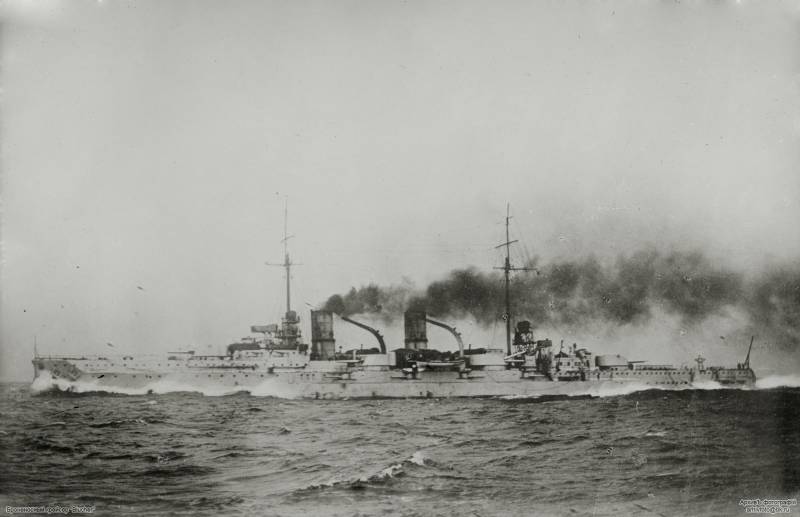
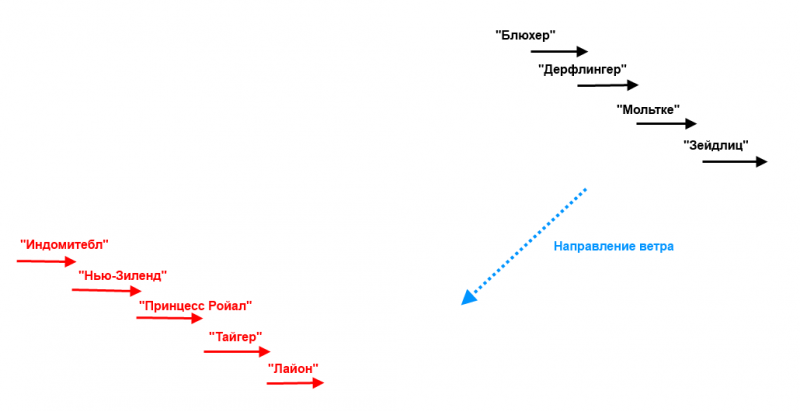
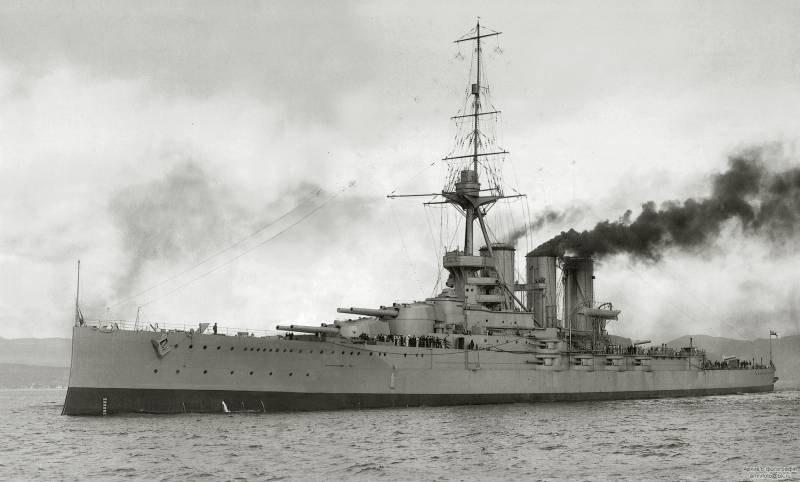
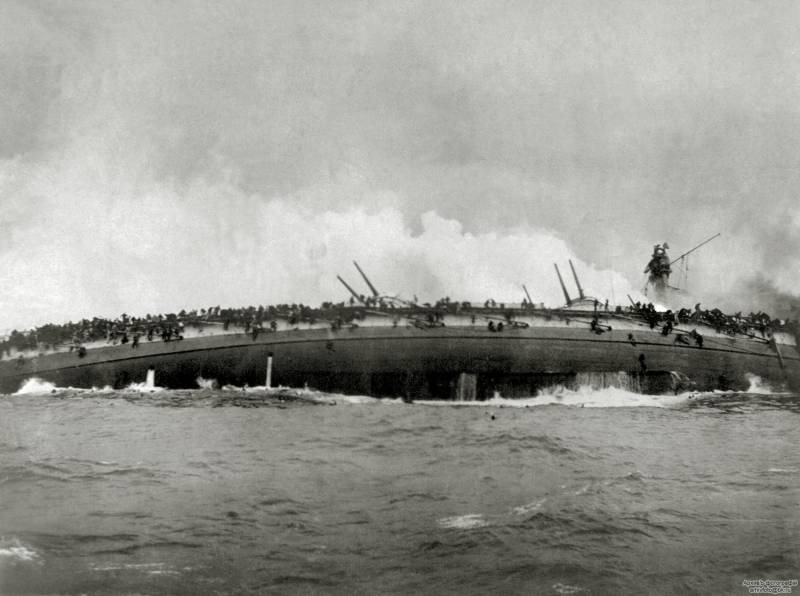
Information